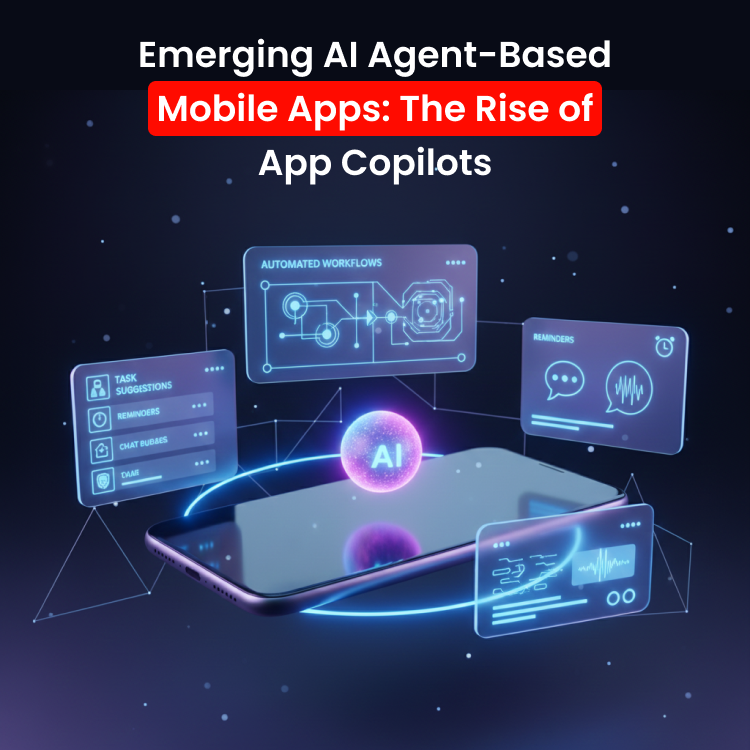

You wake up and ask your phone about the weather. You set a reminder while brushing your teeth. You ask your car to call your coworker. These quick voice commands are now part of daily technology use.
Voice user interface isn’t a future concept. You can already find it in your phone, smart speaker, car, TV, and other things you use every day. This indicates that UX designers must consider how individuals communicate. They should not just focus on clicking or swiping.
If you are involved in UI UX development services, understanding how to design for voice is essential. This skill is as crucial as knowing how to layout a screen. It’s a shift in how interaction works and it’s already happening.
What Is Voice UI and Why It’s Shaping the Future of Digital Interactions
Voice UI lets people speak to devices and get things done without lifting a finger. You tell your phone to call someone, your car to play a song, or your speaker to dim the lights. That’s Voice UI in action, no screen needed. Tools like Siri, Alexa, and Google Assistant are not just helpful. They have become part of how people handle daily tasks.
When you cook, drive, or are too busy to type, talking to tech is not a luxury. It is expected. Voice is fast, hands-free, and keeps up with multitasking in ways buttons and touchscreens never could.
The Evolution of Voice Technology: From Speech Recognition to Conversational AI
Back in the 90s, voice tools followed a script. You had to say the exact phrase, and even then, they misfired more than they worked. Saying “Call John” was hit or miss. As natural language processing kicked in, things started to change. Commands became conversations. You could speak casually, and the system would still understand.
With machine learning, voice tech got better at recognizing how people actually talk—slang, hesitation, even background noise. You can ask a device to check the weather, reorder groceries, or answer a question. And it just handles it. The replies feel faster, smoother, less like a machine.
Why Voice UI Matters in Modern UI/UX Development Services
- People talk to their devices while driving, cooking, walking, or working. They don’t need to stop and look at a screen.
- Voice connects with lights, speakers, doorbells, and appliances. Users don’t switch between devices to get things done.
- Voice search, payments, and shopping now happen through one flow. The user just speaks and moves on.
- In mobile apps, voice cuts down extra steps. Users skip menus and long forms.
- The best user experience design agency adds voice early in the process. It’s treated as a core interaction, not an afterthought.
Core Principles of Designing Intuitive and Efficient Voice User Interfaces
A good voice experience should feel smooth, direct, and familiar. If it’s awkward or hard to remember, people will stop using it. The goal is to reduce friction and make each step easy to follow.
- Keep prompts short and focused. Avoid long, complicated instructions.
- Don’t rely on users to remember exact phrases or commands.
- Offer helpful responses when something goes wrong.
- Use audio feedback to confirm actions. A short sound or spoken message helps users feel confident.
- Avoid long pauses. If nothing happens, users may think the system is broken.
- Limit choices in a single prompt. Too many options at once can slow people down.
- Design like it’s a conversation, not a script.
How UX Designers Can Create Natural, Human-Like Voice Experiences
Machines don’t need to sound mechanical. They don’t need to sound like people either. Somewhere in the middle is where voice works best.
Add short pauses that feel like breathing space. Use confirmations without being repetitive. If something goes wrong, don’t just throw up an error; offer another path. People speak differently depending on the task. Booking a table doesn’t sound like setting an alarm. Voice should adjust with the situation. That keeps things natural. If it feels forced or robotic, people stop talking to it.
Balancing Functionality and Personality in Voice Interface Design
- Voice assistants that stand out usually have a recognizable style. Siri is casual. Alexa is direct.
- Personality should help, not distract. A joke once in a while is fine. Constant humor isn’t.
- Match the voice with the product. A fitness app might sound upbeat. A medical app shouldn’t.
- Stick to one tone. Switching between cheerful and serious in the same session feels off.
- Treat voice like part of the brand, not an extra feature.
Voice UI Accessibility: Designing for Diverse Users and Contexts
Not everyone taps or swipes. Some people speak because that’s their only option. Others speak because it’s faster.
Design should support people with limited vision or movement. Make sure it works in kitchens, living rooms, buses, or loud streets. Avoid commands that are long or awkward to say. Recognize different voices and ways of speaking. Test in real situations, not just quiet labs. Add help cues where needed, but don’t overdo it. Keep it simple. Keep it working.
Common Challenges in Voice UX Design and How to Overcome Them
People say things in unexpected ways. They pause, ramble, or skip parts. Systems fail when they only expect perfect phrases.
Some issues fade as AI improves. But even now, most voice products break when users talk differently. You can’t rely on visuals to fix it. Voice must carry the whole task from start to finish.
In teams offering cloud application development services, designers often build voice flows that recover smoothly. If one command doesn’t land, the system should offer a clear alternative. When that’s in place, users feel confident enough to keep talking. When it’s missing, they stop using voice altogether.
Integrating Voice UI in Cloud-Based Applications for Seamless Experiences
Voice UI needs fast, responsive systems that work across devices. That’s where cloud tools come in.
APIs like Alexa Skills (AWS) and Google Dialogflow help teams deploy voice features quickly. Voice commands are sent, processed, and answered in real time. It all happens behind the scenes, but the result feels instant. Whether someone speaks through a phone, smart speaker, or wearable, the experience should stay consistent. That’s what makes it usable.
Role of Contextual Awareness and User Intent in Voice-Driven UX
Voice UX works better when it doesn’t rely on guesswork. People want systems that respond based on what they mean, not just what they say.
Design starts with intent. Is the user asking for help, or are they trying to complete a task? Then comes timing, location, past behavior. If someone orders coffee every morning at 8, the assistant should be ready for it. Voice should feel one step ahead, without being intrusive.
What the Best User Experience Design Agencies Are Doing with Voice UI
Agencies that lead in voice design don’t wait for clients to ask. They bring voice ideas into the room early.
Some now build full voice-first products, from finance tools to fitness apps. Others test voice flows for existing platforms, improving how users complete tasks hands-free. Case studies often highlight reduced friction and better retention. Voice isn’t added later, it’s part of the initial plan.
Future Trends: Smarter AI, Multimodal UX, and Voice-First Digital Products
- Multimodal design is gaining ground. Users switch between voice, touch, and motion without thinking about it. Interfaces are starting to support that flow.
- AI is learning to listen better. Voice tools are picking up on pace, tone, and emotion to offer more relevant responses.
- Wearables and connected devices are becoming voice-ready. Watches, earbuds, and even smart glasses are joining phones and speakers in how people interact.
- Shortcuts are getting smarter. Assistants can suggest actions based on time, habits, and location.
- Design is getting simpler. Users want less talking, faster answers, and clear paths—no matter what device they’re using.
Key Takeaways
Voice UX isn’t extra anymore. People expect it. They talk to their devices without thinking twice.
Designers who ignore voice fall behind. Those who learn it now help shape how people interact tomorrow. To stay ahead, explore what’s already working and build on it.
Visit Rainstream Technologies to see how design meets voice in real projects that work. Contact us today!





